Ready to take your gardening to the next level? Raised beds are game-changers – they save your back, improve drainage, and look amazing. But why settle for basic wooden boxes when you can get creative? We've gathered 20 brilliant ideas that'll transform your garden, from cedar beds with built-in trellises to mobile designs you can move around your yard. Whether you're dealing with tough soil or just want something that looks incredible, there's a perfect solution waiting for you.
1. Cedar Raised Garden Bed with Integrated Trellis System
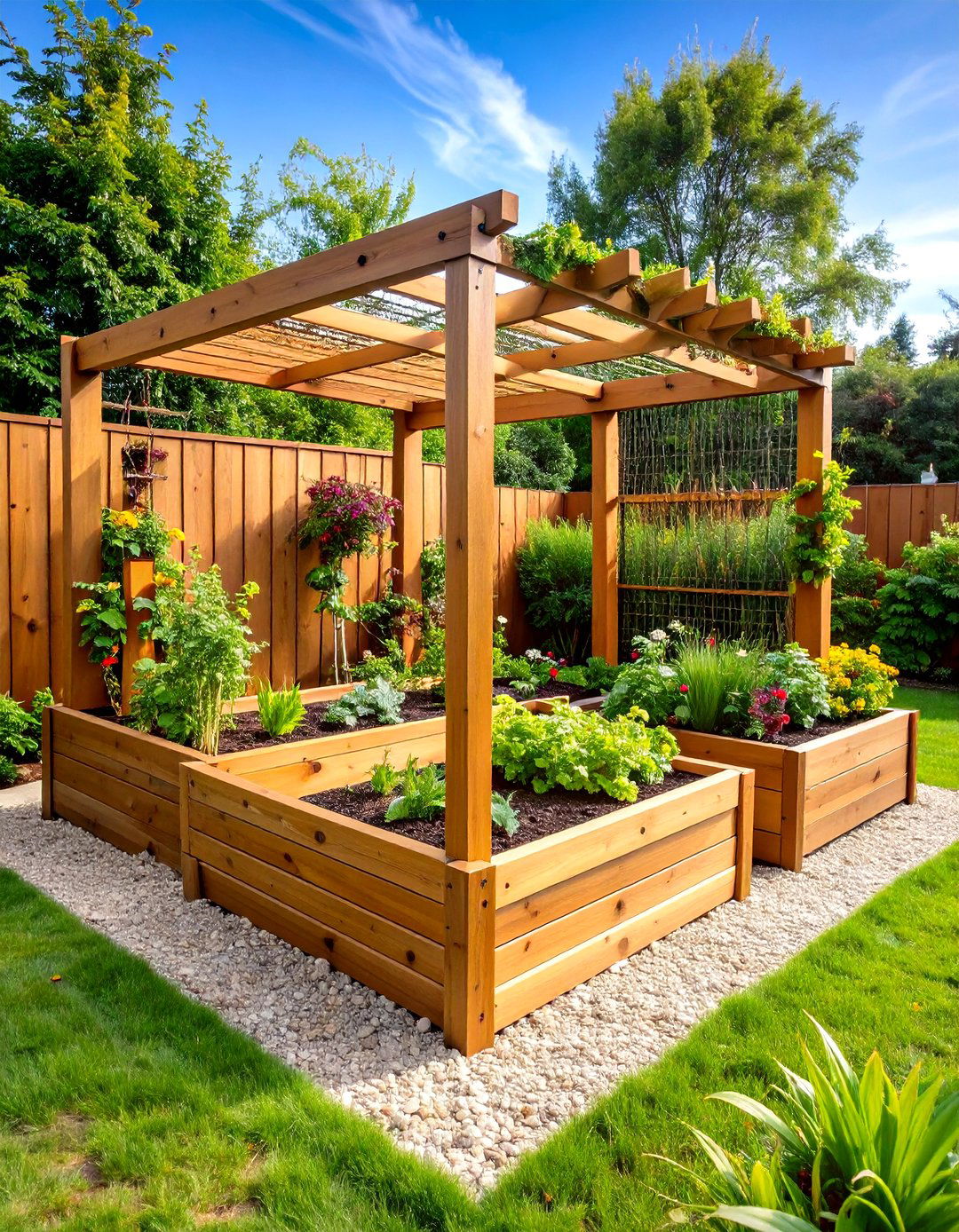
Combining naturally rot-resistant cedar construction with built-in vertical growing support, this raised garden bed design maximizes both horizontal and vertical space. The 8-foot-long cedar frame stands 18 inches tall, providing ample soil depth for root vegetables while the integrated trellis system allows climbing plants like peas, beans, and cucumbers to flourish. The trellis features sturdy posts with wire mesh or wooden slats, creating a living wall effect that adds privacy and visual interest. Cedar's natural oils repel insects and resist decay, ensuring longevity without chemical treatments. This design works particularly well when positioned to create garden rooms or define growing areas, while the warm wood tones complement any landscape style.
2. Galvanized Steel Raised Garden Bed with Modern Aesthetic

This contemporary raised garden bed features sleek galvanized steel construction that delivers both durability and modern appeal. The powder-coated finish provides excellent corrosion resistance while offering color options to coordinate with existing hardscape elements. Steel's thin profile maximizes growing space within the frame, and the material's thermal properties help soil warm faster in spring, extending the growing season. The clean lines and industrial aesthetic make this design perfect for modern landscapes, urban settings, or minimalist garden designs. At 12 to 24 inches in height, these beds can accommodate various planting needs while the modular design allows for easy expansion or reconfiguration as garden requirements evolve.
3. Natural Stone Raised Garden Bed with Rustic Charm
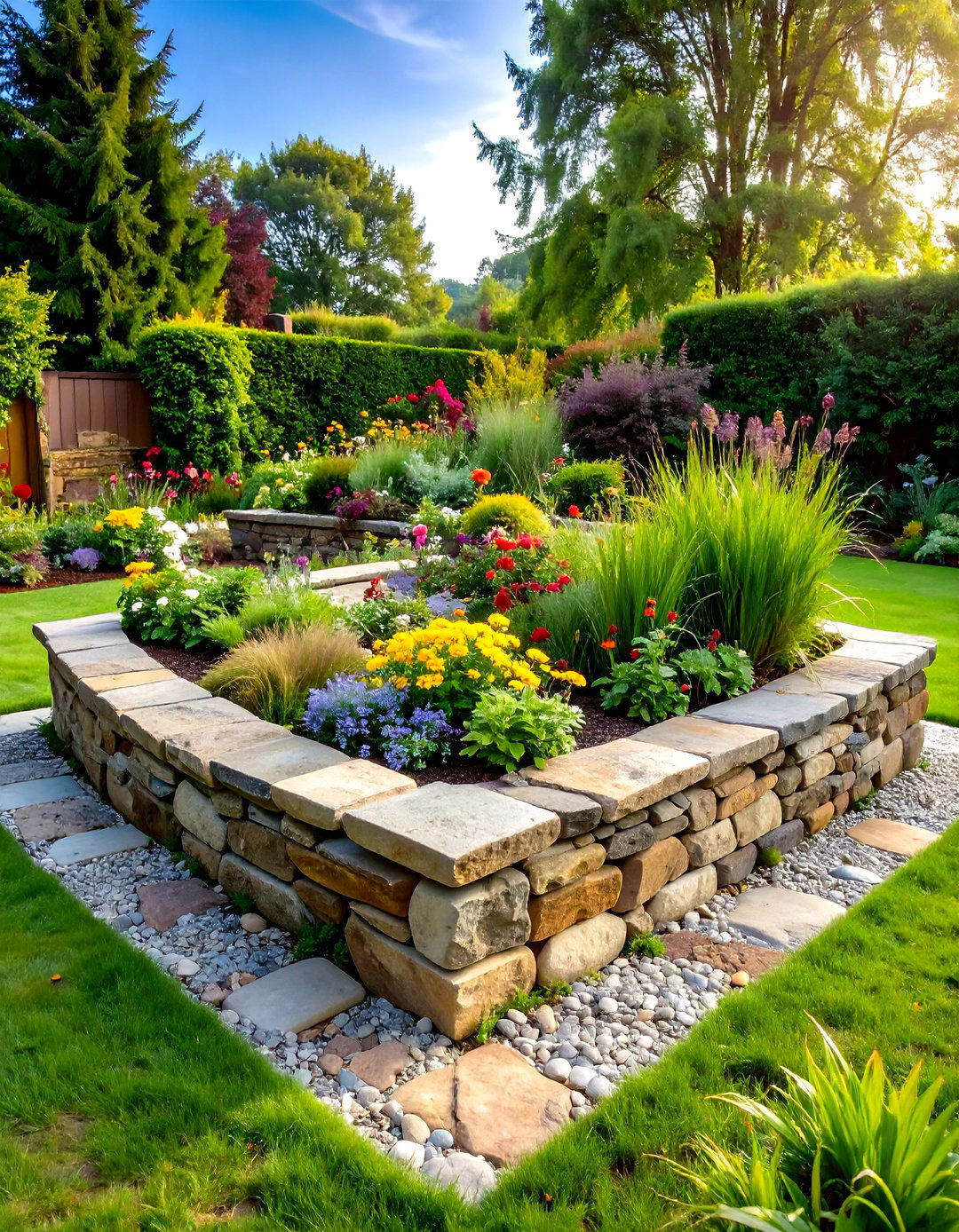
Embrace timeless elegance with this natural stone raised garden bed that creates a permanent, beautiful focal point in any landscape. Constructed from locally sourced fieldstone, flagstone, or river rock, this design offers unlimited durability while harmonizing with natural surroundings. The stones can be dry-stacked for flexibility or mortared for permanent installation, creating walls 12 to 30 inches high depending on desired planting depth. This raised bed design excels in traditional, cottage, or Mediterranean garden styles, and the thermal mass of stone helps regulate soil temperature throughout growing seasons. The irregular shapes and varied textures of natural stone create visual interest while providing excellent drainage and structural integrity.
4. Tiered Raised Garden Bed with Cascading Design
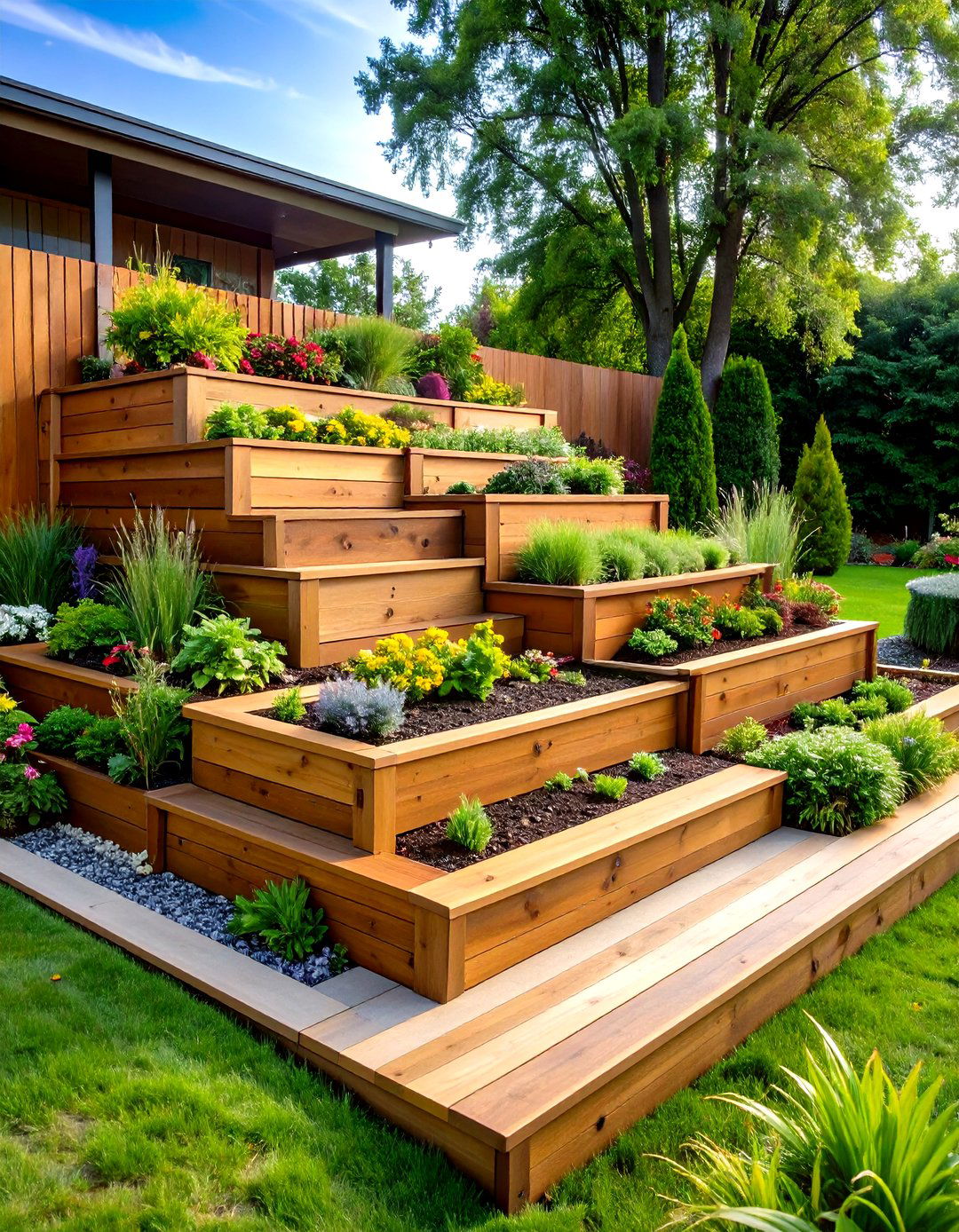
Transform sloped areas or create dramatic visual impact with this tiered raised garden bed system that maximizes growing space through vertical layering. Multiple levels, typically three to four tiers, create a terraced effect using cedar or composite materials in heights ranging from 8 to 16 inches per level. This design optimizes sun exposure for each tier while providing excellent drainage as water naturally flows from upper to lower levels. The cascading structure is perfect for growing plants with different light requirements, placing sun-loving vegetables on upper tiers and shade-tolerant herbs or leafy greens below. This system also creates natural pathways for easy maintenance and harvesting while adding architectural interest to any garden space.
5. Circular Raised Garden Bed with Keyhole Access

Inspired by African permaculture principles, this circular raised garden bed features a distinctive keyhole-shaped access path leading to a central composting basket. The 6-foot-diameter design maximizes growing space while ensuring every plant remains within arm's reach from the central access point. The composting basket continuously feeds nutrients to surrounding plants while providing efficient watering through the central system. Constructed from stacked stone, concrete blocks, or timber, this raised bed stands 24 inches tall with the composting column extending slightly higher. This design excels in small spaces, provides excellent water retention, and creates a beautiful focal point that combines functionality with sustainable gardening principles.
6. Hugelkultur Raised Garden Bed with Buried Wood Foundation

This innovative raised garden bed incorporates the ancient hugelkultur technique, creating a self-sustaining ecosystem through buried wood decomposition. The foundation consists of logs, branches, and woody debris layered beneath quality topsoil, creating a sponge-like structure that retains moisture and slowly releases nutrients. The mounded design typically rises 18 to 30 inches above ground level, gradually settling as wood decomposes over several years. This method dramatically reduces watering requirements while building incredibly rich soil biology. The irregular, organic shape blends naturally with woodland settings, and the decomposing wood provides long-term soil amendments. This design particularly suits areas with abundant woody debris and gardeners seeking sustainable, low-maintenance growing systems.
7. Composite Raised Garden Bed with Low-Maintenance Durability
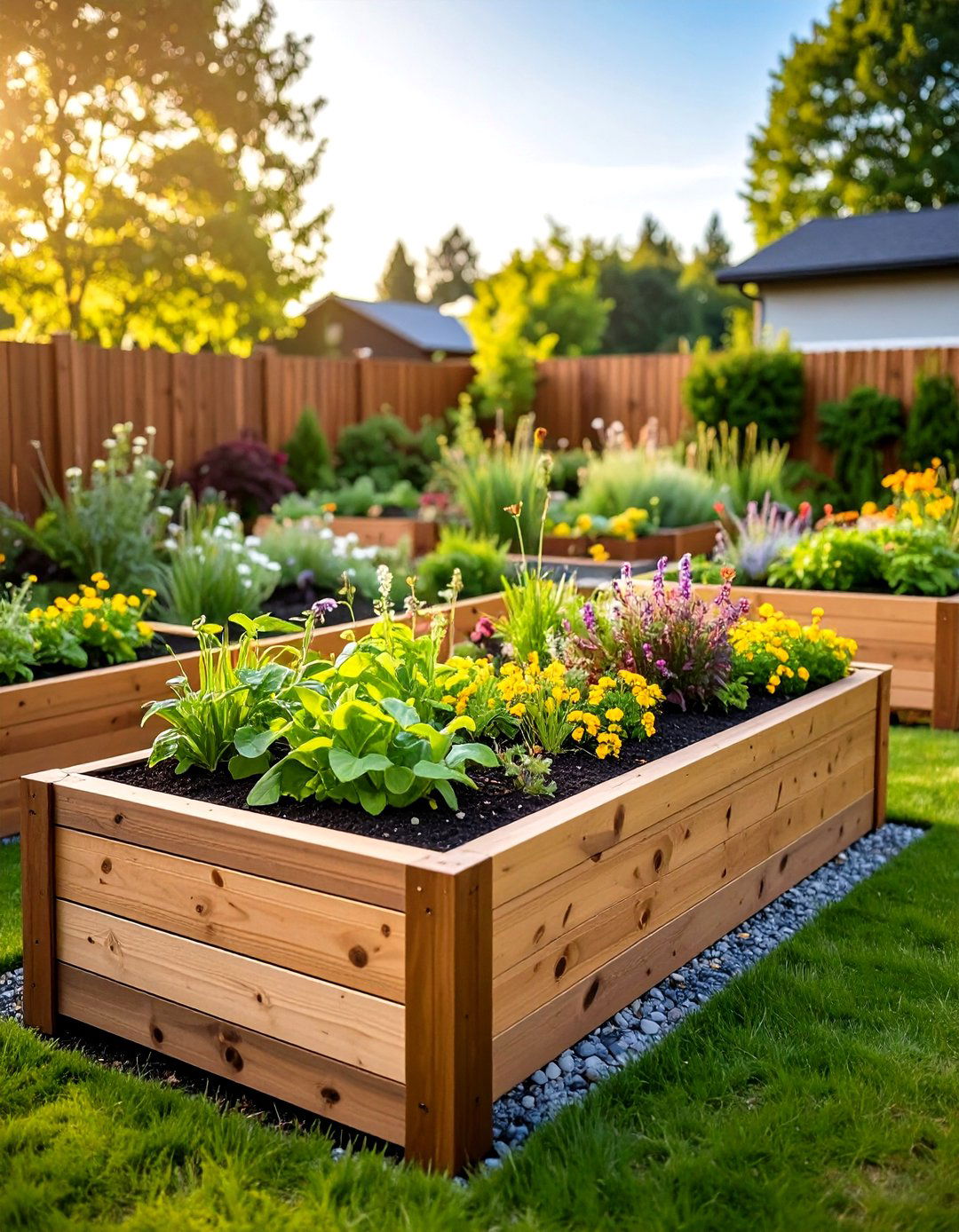
Engineered from recycled materials, this composite raised garden bed offers the warmth and appearance of wood with superior longevity and minimal maintenance requirements. The synthetic lumber resists rot, insects, and weathering while maintaining consistent dimensions and color over decades. Available in various wood-tone finishes, composite materials complement any landscape style while providing excellent structural integrity. The modular design allows for easy assembly and reconfiguration, with interlocking corners and standard lumber dimensions. This raised bed typically measures 4 by 8 feet with heights ranging from 8 to 16 inches, providing ample growing space for vegetables and herbs while requiring no annual maintenance, staining, or replacement.
8. Brick Raised Garden Bed with Classic Formal Appeal

Traditional brick construction creates this elegant raised garden bed that adds timeless sophistication to formal garden designs. The classic material can be laid in various patterns, from simple running bond to decorative herringbone, creating visual texture and architectural interest. Bricks provide excellent thermal mass, helping moderate soil temperatures while their porous nature allows proper drainage. The typical height ranges from 12 to 24 inches, with the option for double-wall construction for additional strength and insulation. This design works particularly well in colonial, Victorian, or traditional landscape styles, and the neutral earth tones complement both vegetables and ornamental plantings while creating defined garden spaces.
9. Vertical Raised Garden Bed with Space-Saving Design
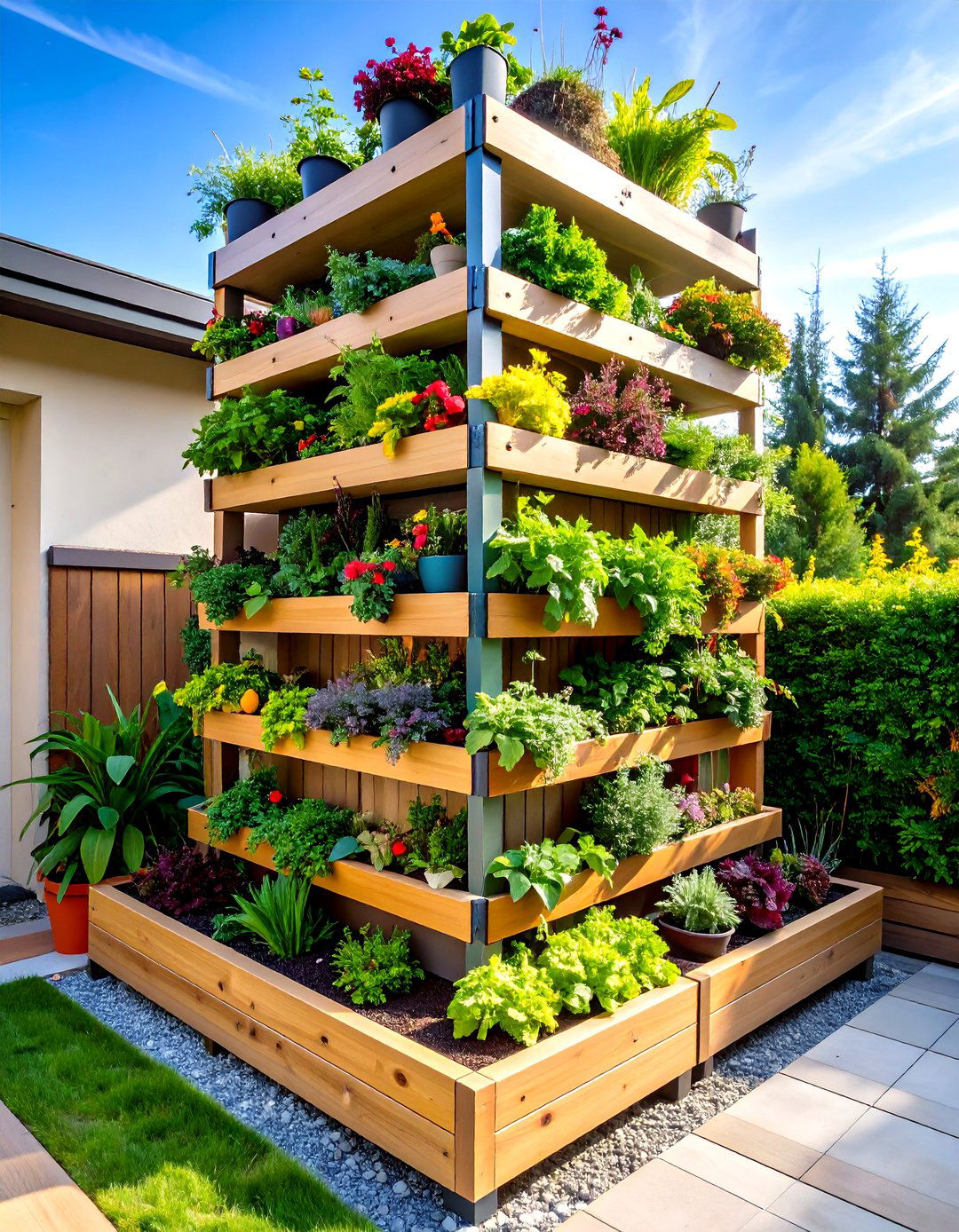
Maximize production in minimal space with this vertical raised garden bed system that combines multiple growing levels in a compact footprint. The stepped design features progressively smaller tiers, creating a pyramid effect that ensures each level receives adequate sunlight. Constructed from cedar or composite materials, the system typically includes three to four levels ranging from 6 to 12 inches in height. This design excels for growing herbs, lettuce, strawberries, and trailing plants, with the vertical structure creating an attractive living sculpture. The compact design fits perfectly on patios, balconies, or small yards while providing surprising growing capacity and easy maintenance access.
10. Hexagonal Raised Garden Bed with Geometric Interest
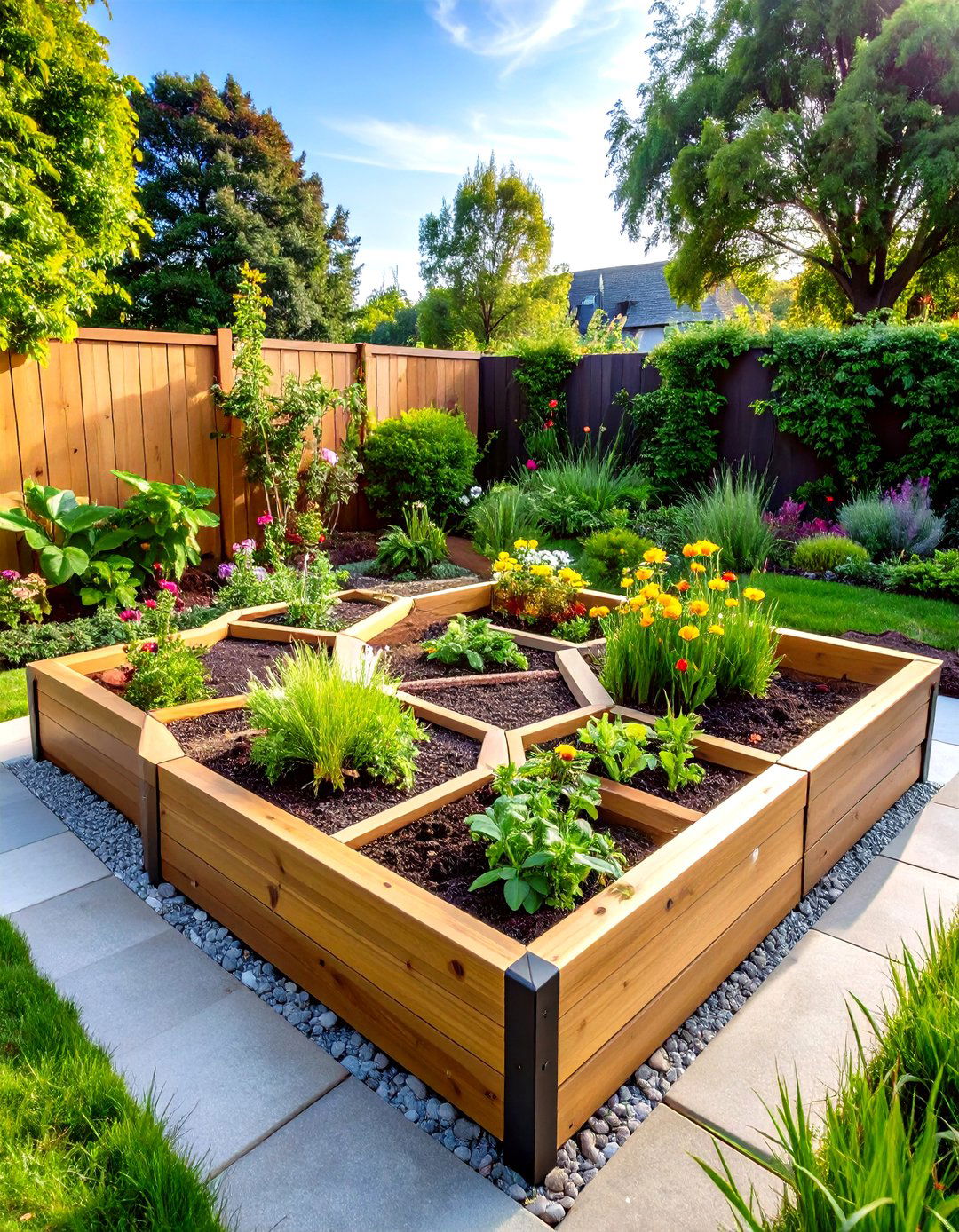
Break away from traditional rectangles with this striking hexagonal raised garden bed that creates unique geometric appeal while optimizing growing space. The six-sided design maximizes planted area within the footprint while providing interesting angles and visual dynamics. Constructed from cedar, composite, or metal materials, the hexagonal shape typically measures 6 to 8 feet across with heights ranging from 12 to 18 inches. This design works exceptionally well in modern or contemporary landscapes, and multiple hexagons can be clustered to create honeycomb patterns or used individually as focal points. The unique shape encourages creative planting arrangements while maintaining easy access to all growing areas.
11. Raised Garden Bed with Integrated Seating Bench
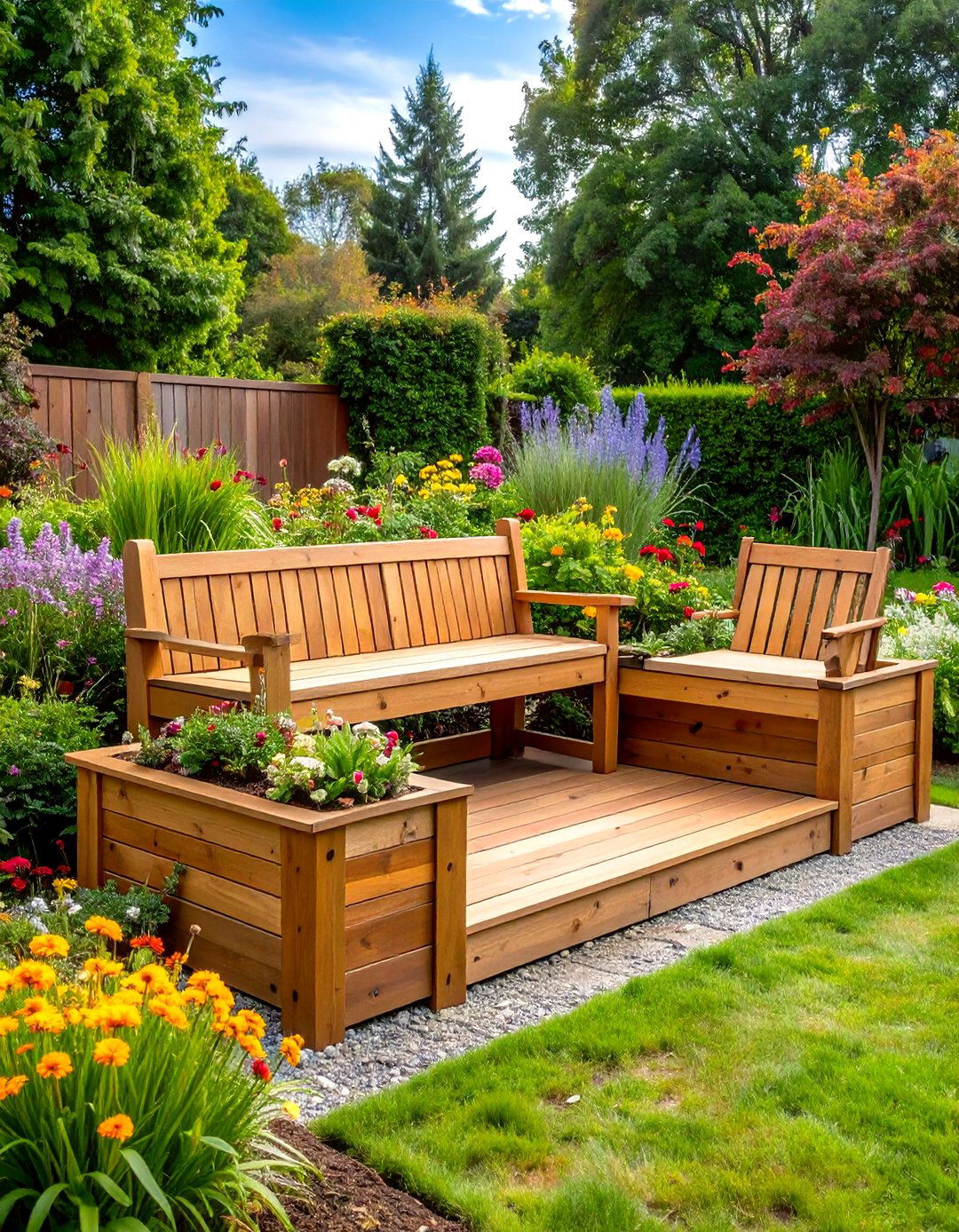
Combine functionality with comfort in this raised garden bed design that incorporates built-in seating along one or more sides. The wider frame construction, typically 16 to 20 inches wide, provides a comfortable seating surface while maintaining full planting capacity within the bed. The bench feature encourages garden enjoyment and provides a convenient resting spot during maintenance activities. Constructed from cedar, composite, or concrete materials, the seating surface can be fitted with cushions or left natural for weather resistance. This design particularly suits contemplative gardens, therapy gardens, or spaces where garden viewing and interaction are priorities, creating an inviting environment for all ages.
12. Raised Garden Bed with Integrated Drip Irrigation System

Streamline garden maintenance with this raised garden bed featuring built-in drip irrigation that delivers precise watering directly to plant roots. The system includes buried tubing, emitters, and automatic timers that ensure consistent moisture levels while conserving water. The raised bed construction, typically 12 to 18 inches tall, provides excellent drainage while the irrigation system prevents both overwatering and drought stress. This design works with any construction material but particularly suits larger installations where manual watering becomes impractical. The professional irrigation system can be customized for different plant zones, providing optimal growing conditions while reducing labor and water waste.
13. Spiral Raised Garden Bed with Herb Garden Focus
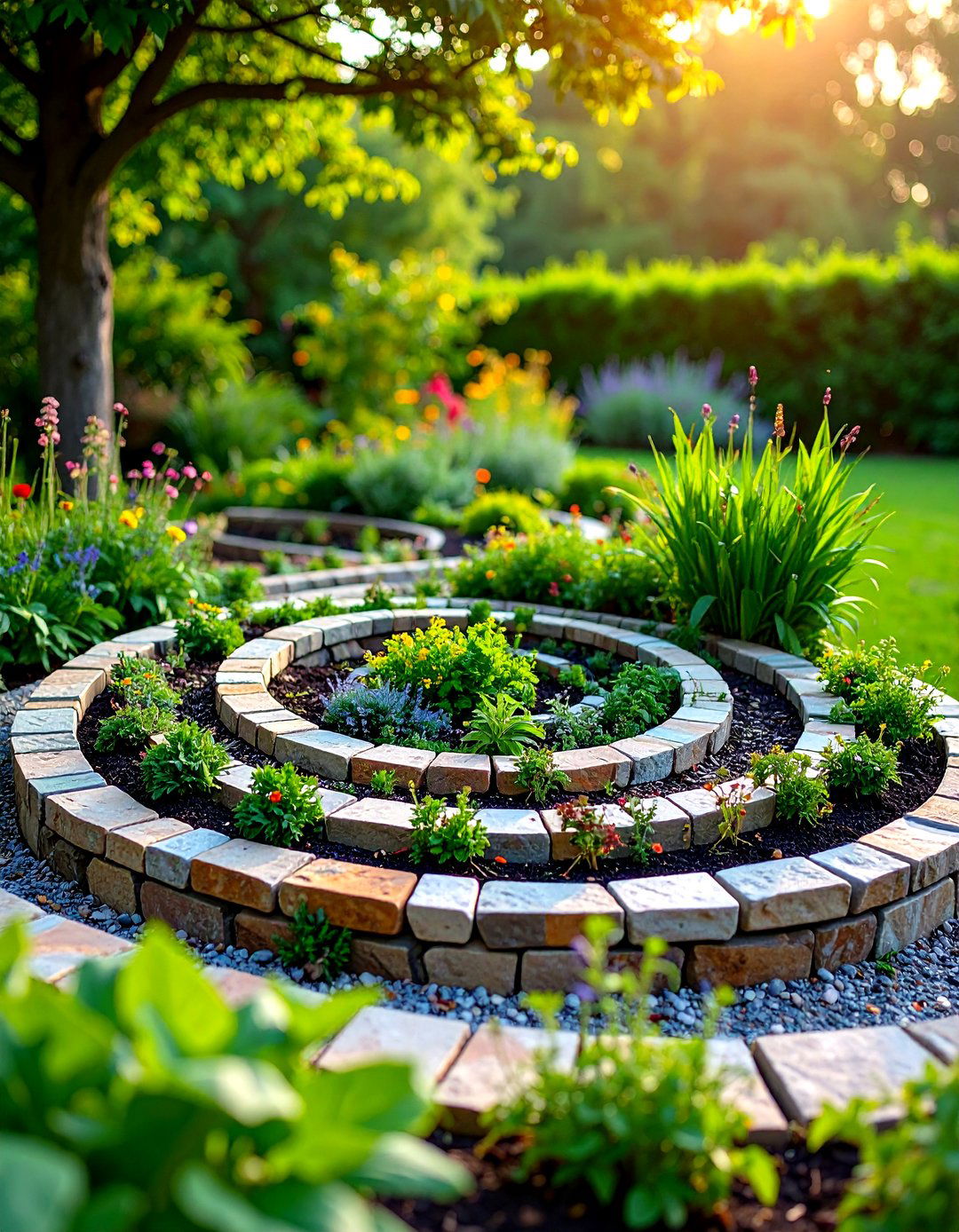
Create a stunning centerpiece with this spiral raised garden bed that maximizes growing space while providing diverse microclimates for various herbs. The ascending spiral design, typically 6 to 8 feet in diameter, creates different moisture and sun exposure zones, perfect for Mediterranean herbs at the top and moisture-loving plants at the base. Constructed from stone, concrete blocks, or timber, the spiral rises 18 to 24 inches at its highest point. This design becomes a beautiful sculptural element while providing easy access to all plants and excellent drainage. The spiral layout encourages companion planting and creates natural divisions between different herb varieties.
14. L-Shaped Raised Garden Bed with Corner Utilization
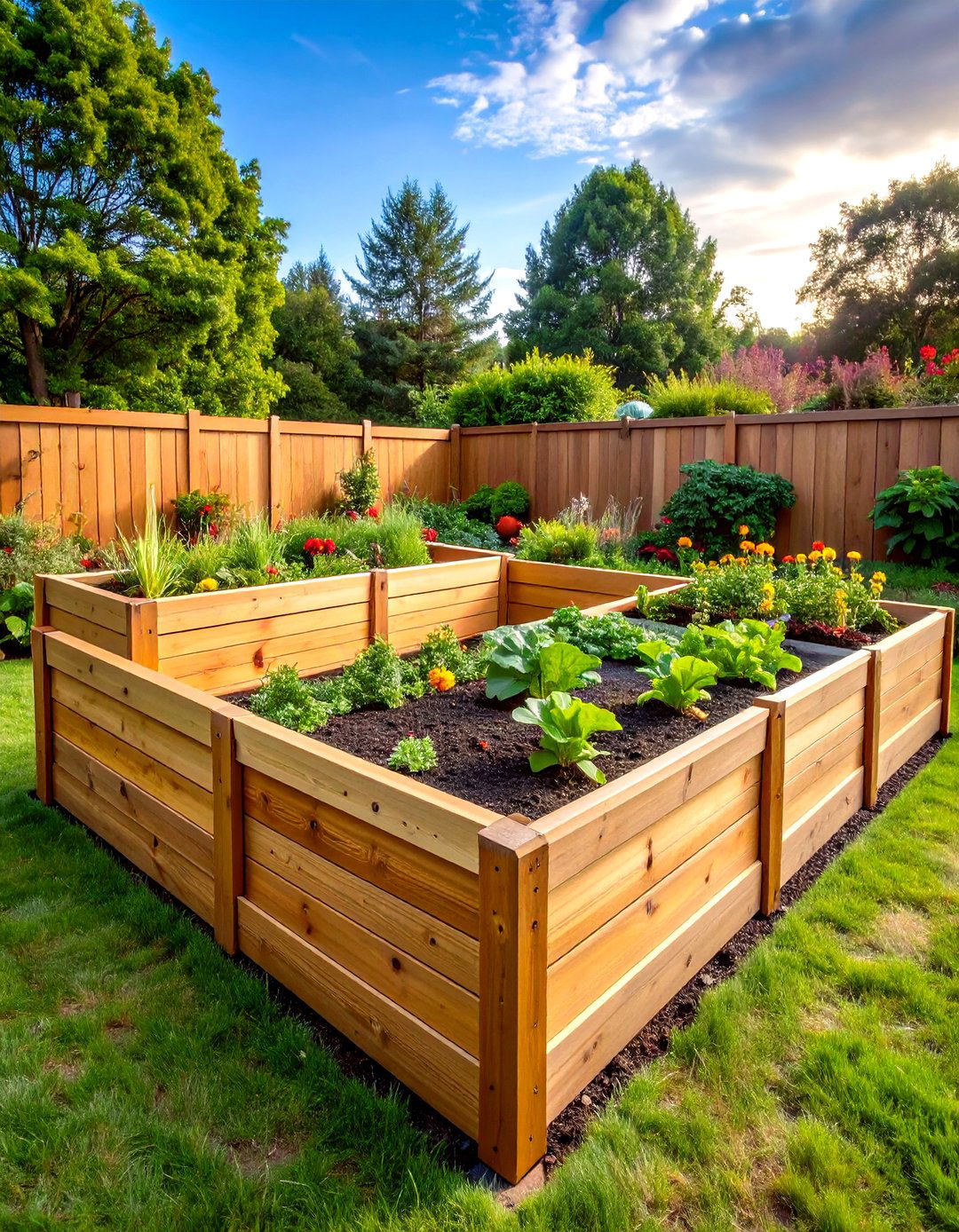
Maximize corner spaces and create defined growing areas with this L-shaped raised garden bed that efficiently uses available space while providing ample growing room. The configuration typically features two perpendicular sections, each 4 to 8 feet long, creating a corner garden that can accommodate different plant types or growing seasons. The design works particularly well against fences, walls, or property boundaries, creating intimate growing spaces while maintaining easy access from multiple sides. Constructed from cedar, composite, or steel materials, the L-shape can be customized to fit specific site conditions while providing excellent organization for different crops or garden zones.
15. Raised Garden Bed with Greenhouse Hoop House Integration

Extend growing seasons and protect plants with this raised garden bed system that includes removable greenhouse hoops for season extension. The bed features anchor points for hoop installation, allowing plastic or row cover attachment during cold weather or pest pressure. The 4-foot-wide design provides optimal width for hoop coverage while maintaining easy access to plants. Constructed from cedar or composite materials, the system typically stands 12 to 16 inches tall with hoops extending 18 to 24 inches above the bed. This design enables year-round growing in many climates while providing flexibility to remove protection during optimal weather conditions.
16. Raised Garden Bed with Integrated Cold Frame Design

Combine season extension with raised bed convenience in this design that features a built-in cold frame for protecting tender plants and starting seedlings. The south-facing cold frame section includes a hinged, transparent lid that captures and retains solar heat while the main bed provides standard growing space. The dual-purpose design typically measures 4 by 8 feet with the cold frame occupying one-third of the area. Constructed from cedar with polycarbonate or glass glazing, this system enables early spring planting and late fall harvests while providing year-round growing potential. The integrated design eliminates the need for separate cold frame structures while maximizing garden productivity.
17. Raised Garden Bed with Integrated Compost Bin System

Create a complete growing and waste management system with this raised garden bed that includes integrated composting bins for continuous soil improvement. The design features the main growing area alongside dedicated composting chambers that process kitchen scraps and garden waste into rich amendments. The three-bin system allows for continuous composting cycles while the raised bed provides immediate growing space. Constructed from cedar or composite materials, the entire system typically measures 4 by 12 feet with the composting section accounting for one-third of the footprint. This design promotes sustainable gardening practices while providing convenient access to finished compost for bed improvement.
18. Raised Garden Bed with Integrated Rainwater Collection
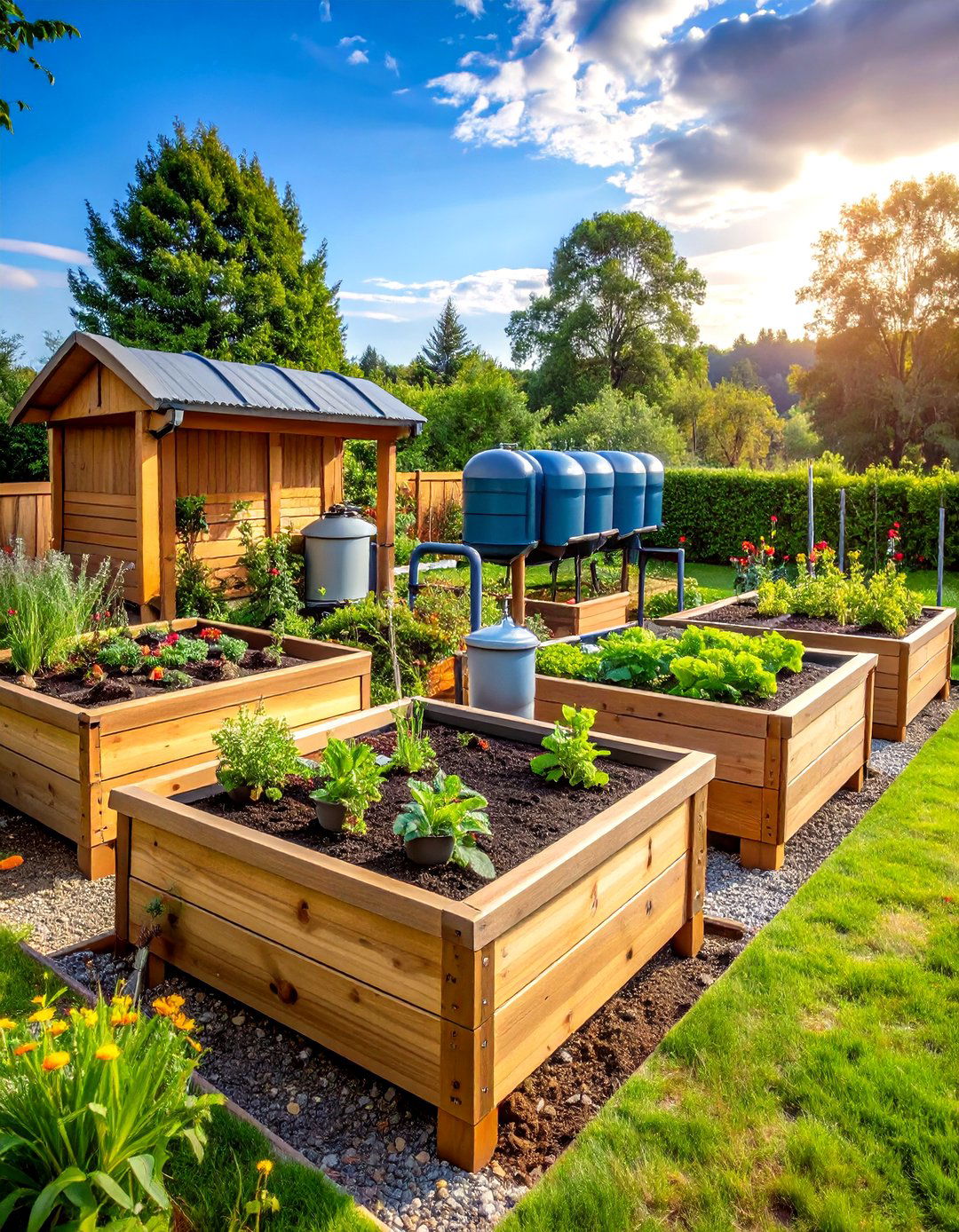
Combine water conservation with productive growing in this raised garden bed system that includes integrated rainwater collection and storage. The design features collection gutters, downspouts, and storage tanks that capture precipitation for later irrigation use. The raised bed construction elevates plants above potential flooding while the collection system provides sustainable water sources. The system typically includes a 55-gallon storage tank and simple distribution network that can be manual or automatic. This design particularly suits areas with irregular rainfall patterns or water restrictions, providing garden independence while promoting environmental sustainability.
19. Mobile Raised Garden Bed with Caster Wheel System

Create flexible growing spaces with this mobile raised garden bed that features heavy-duty caster wheels for easy repositioning. The design enables sun-chasing, seasonal storage, and space optimization by moving the garden to optimal locations throughout the year. Constructed from cedar or composite materials, the bed typically measures 2 by 4 feet to maintain manageable weight while providing substantial growing space. The caster system includes locking wheels for stability during growing seasons and smooth rolling for repositioning. This design particularly suits renters, small spaces, or gardeners who enjoy rearranging their growing areas to match changing conditions or preferences.
20. Raised Garden Bed with Integrated Trellis Archway Connection
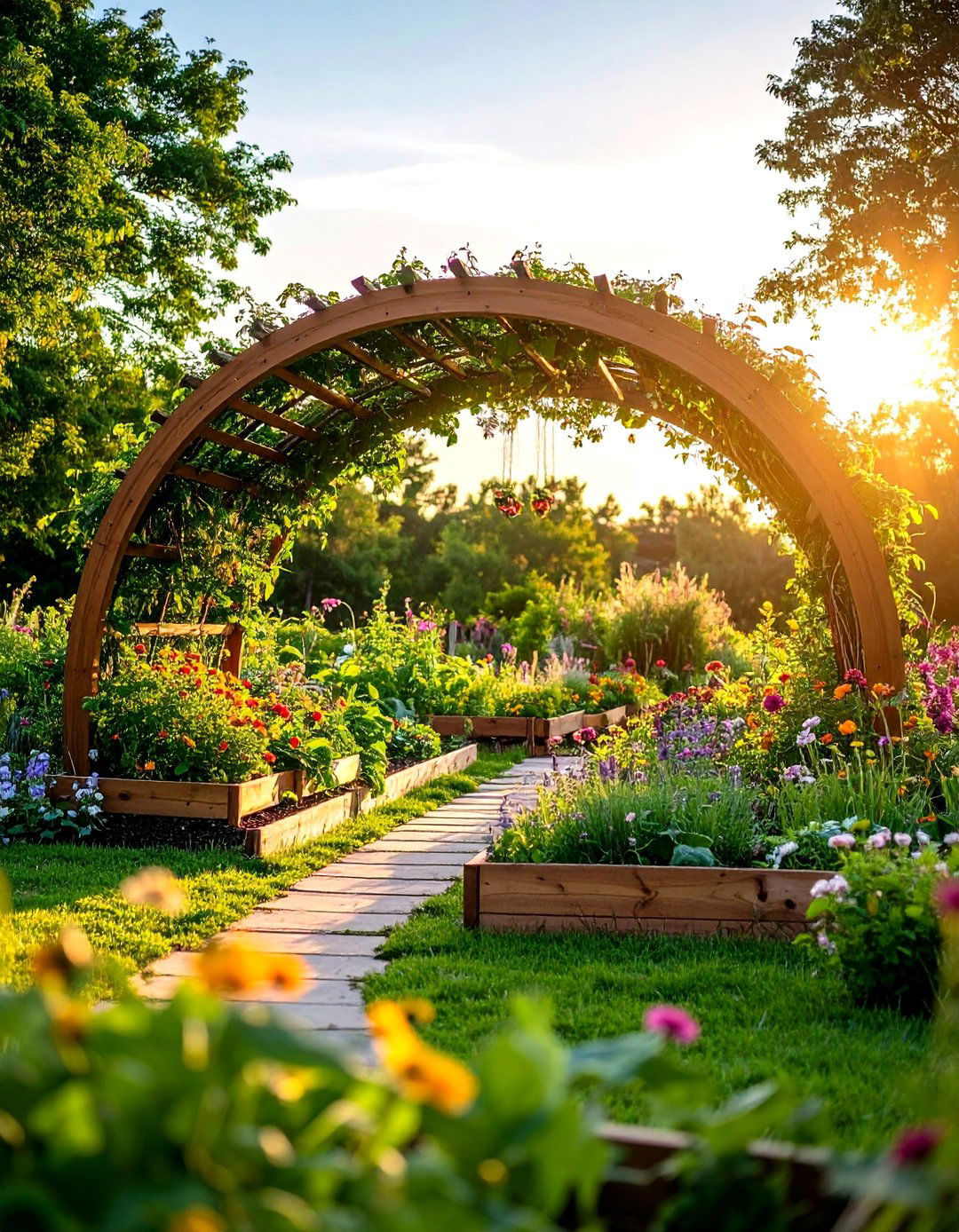
Connect multiple raised garden beds while creating stunning vertical growing space with this archway trellis system that spans between beds. The design features matching raised beds positioned to create pathways with overhead growing space for climbing plants. The archway construction uses cedar or metal materials that support substantial plant weight while creating living tunnels or garden rooms. The beds typically measure 4 by 4 feet with 6-foot spacing to accommodate comfortable walking paths. This design creates dramatic garden features while maximizing growing space and providing natural division between different garden areas or growing zones.
Conclusion:
These 20 raised garden bed ideas demonstrate the incredible versatility and potential of elevated growing systems. From traditional cedar rectangles to innovative spiral designs, each concept offers unique advantages for different spaces, styles, and growing goals. The key to success lies in matching the design to your specific needs, whether that's maximizing small spaces, creating low-maintenance systems, or building stunning garden features. By incorporating elements like integrated irrigation, composting systems, or season extension features, raised beds become complete growing ecosystems that enhance both productivity and garden enjoyment while creating beautiful, functional outdoor spaces.






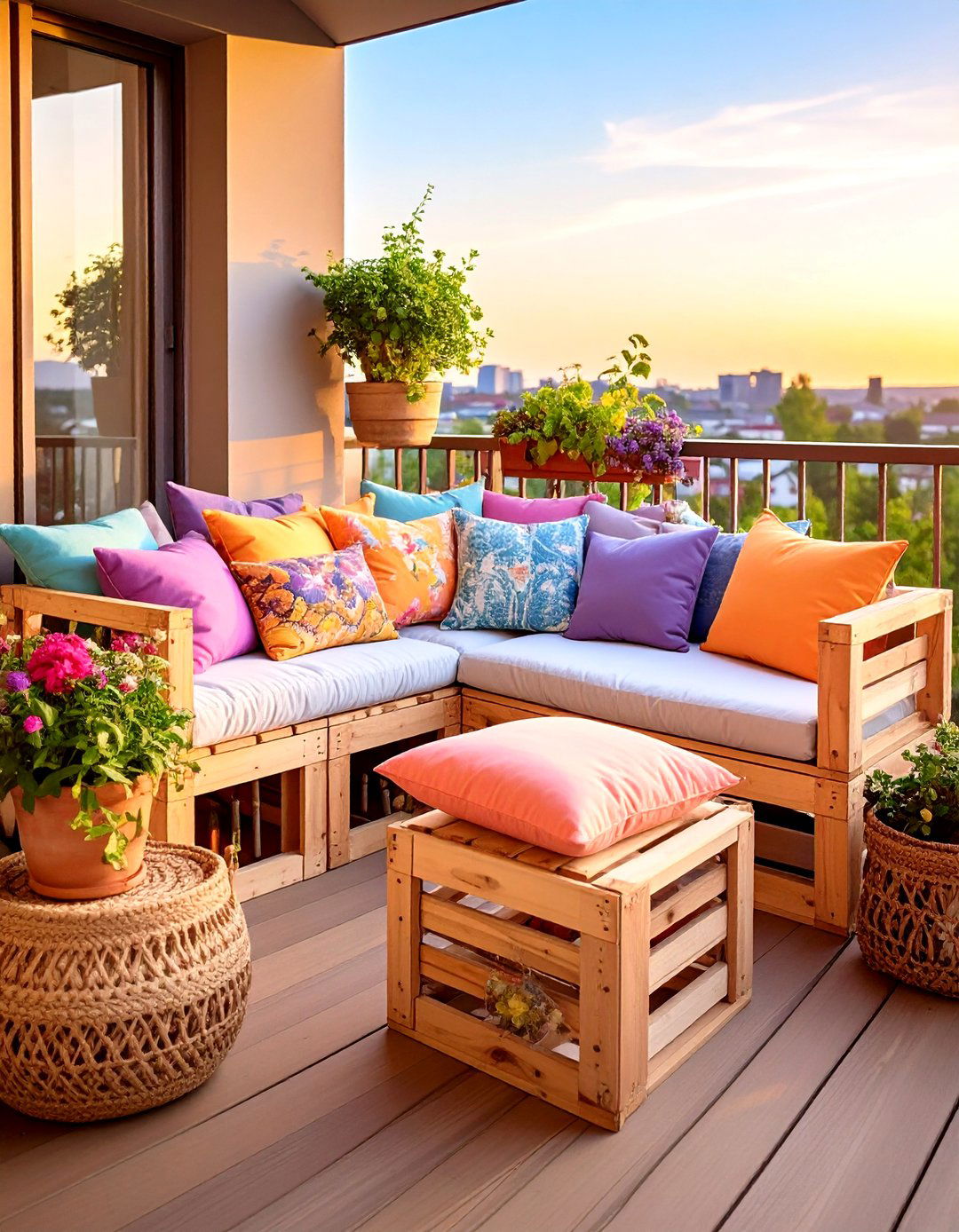
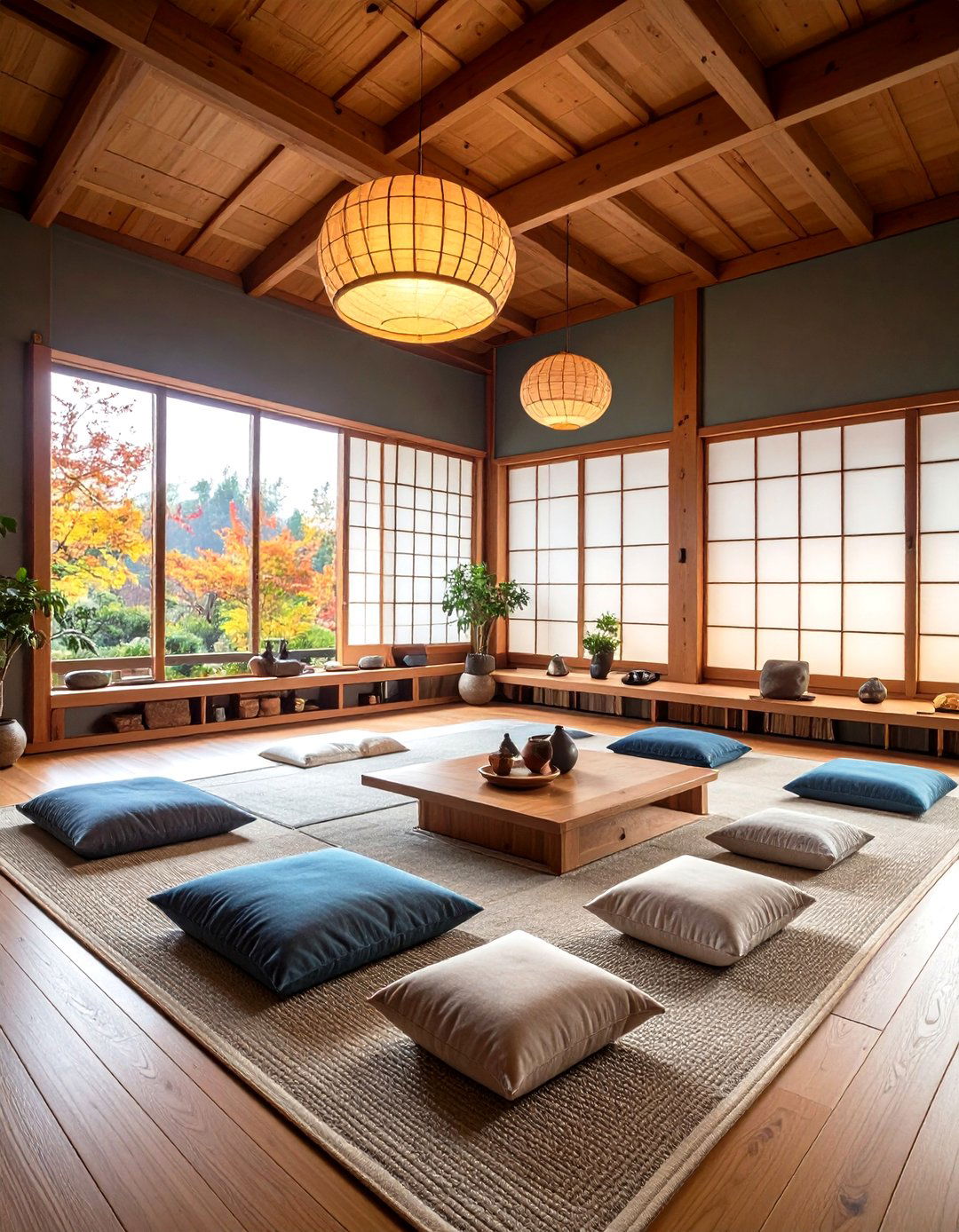
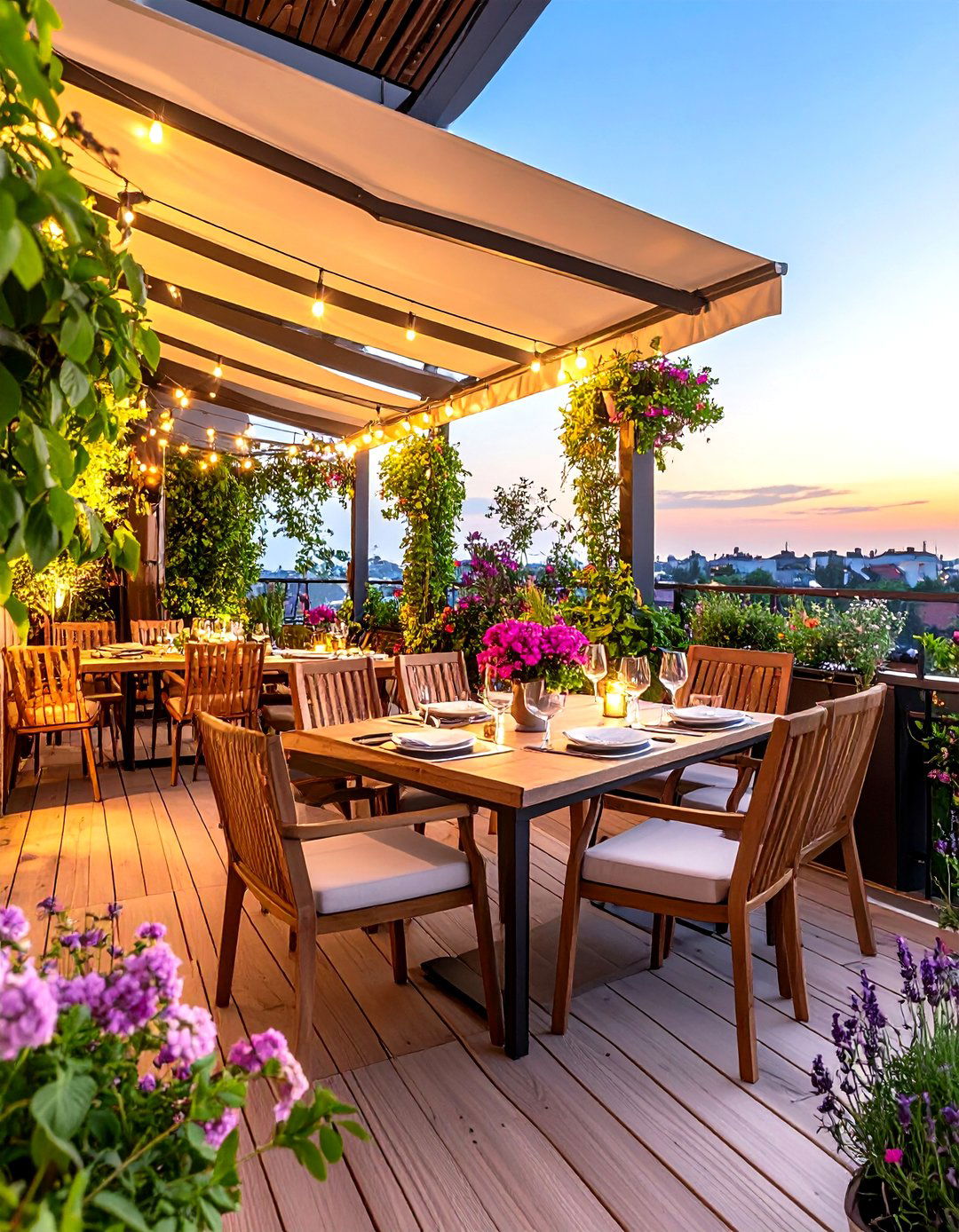

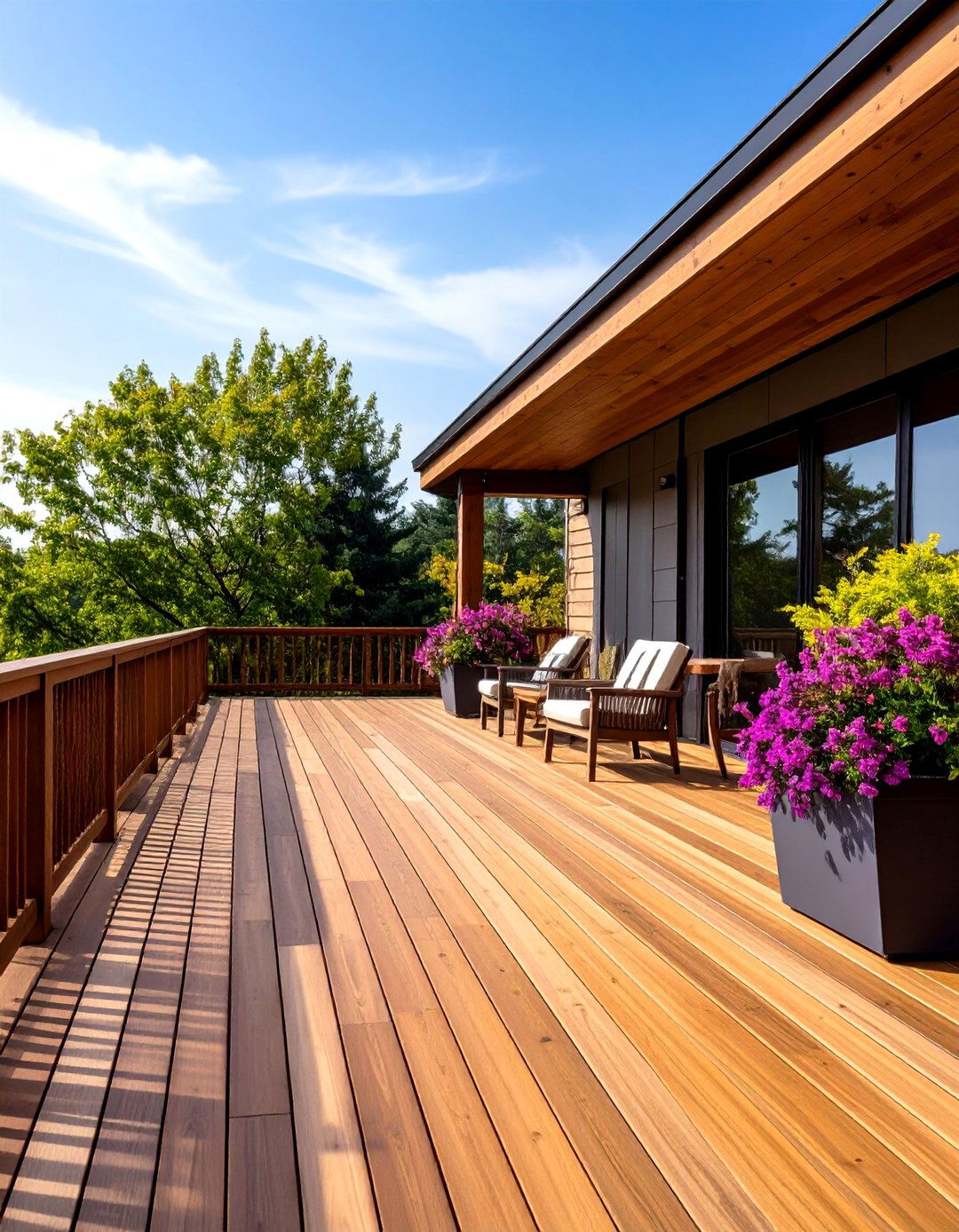
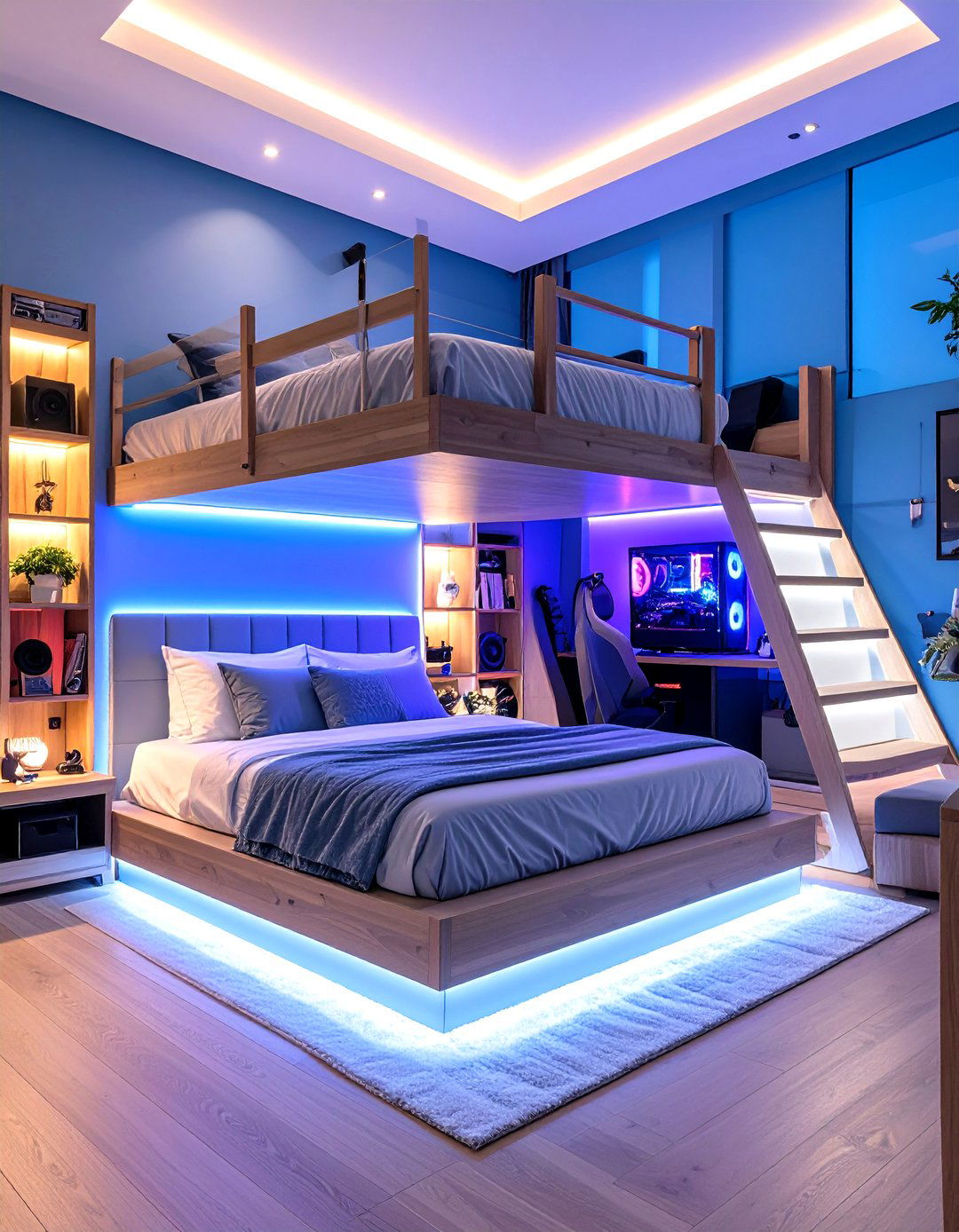
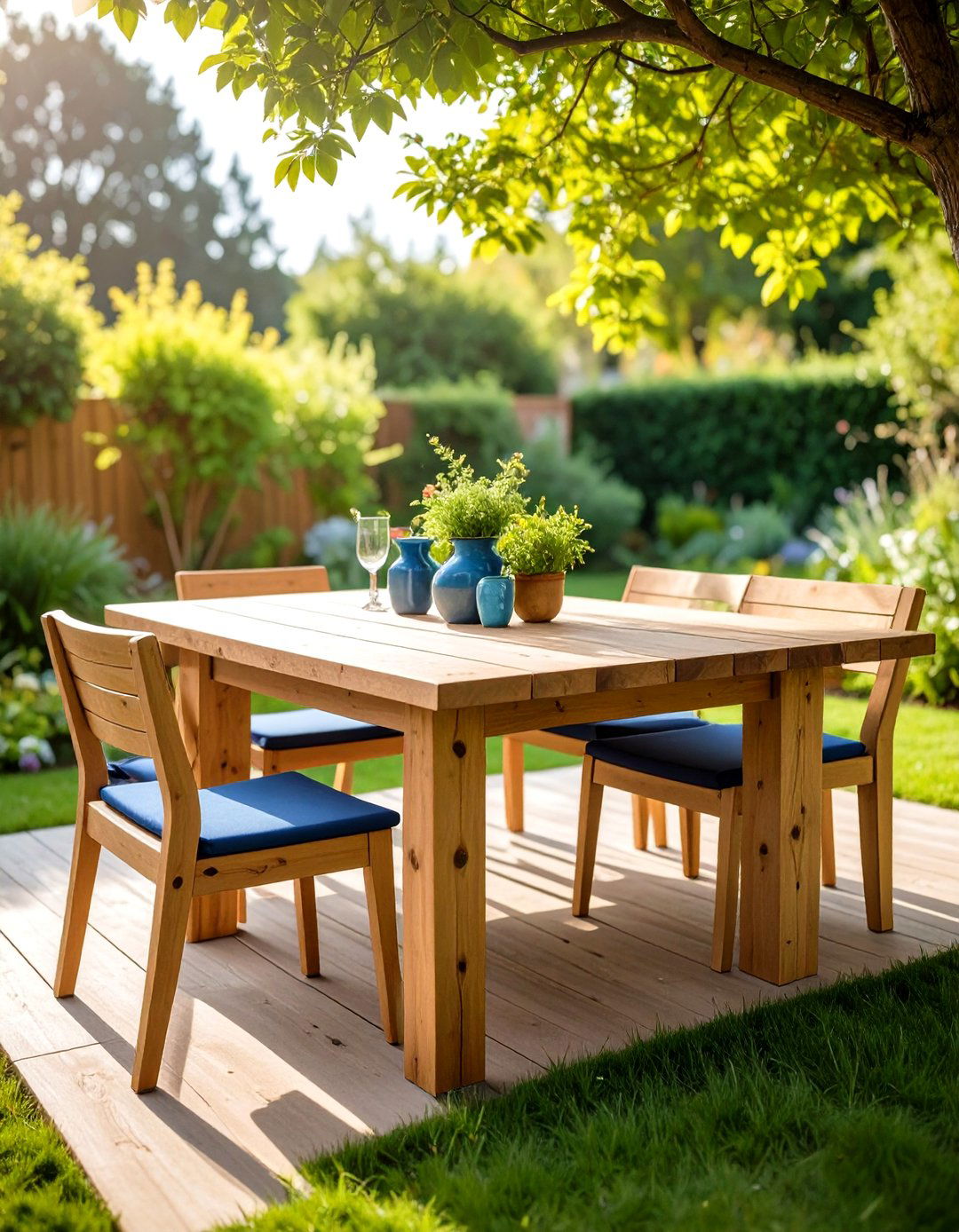
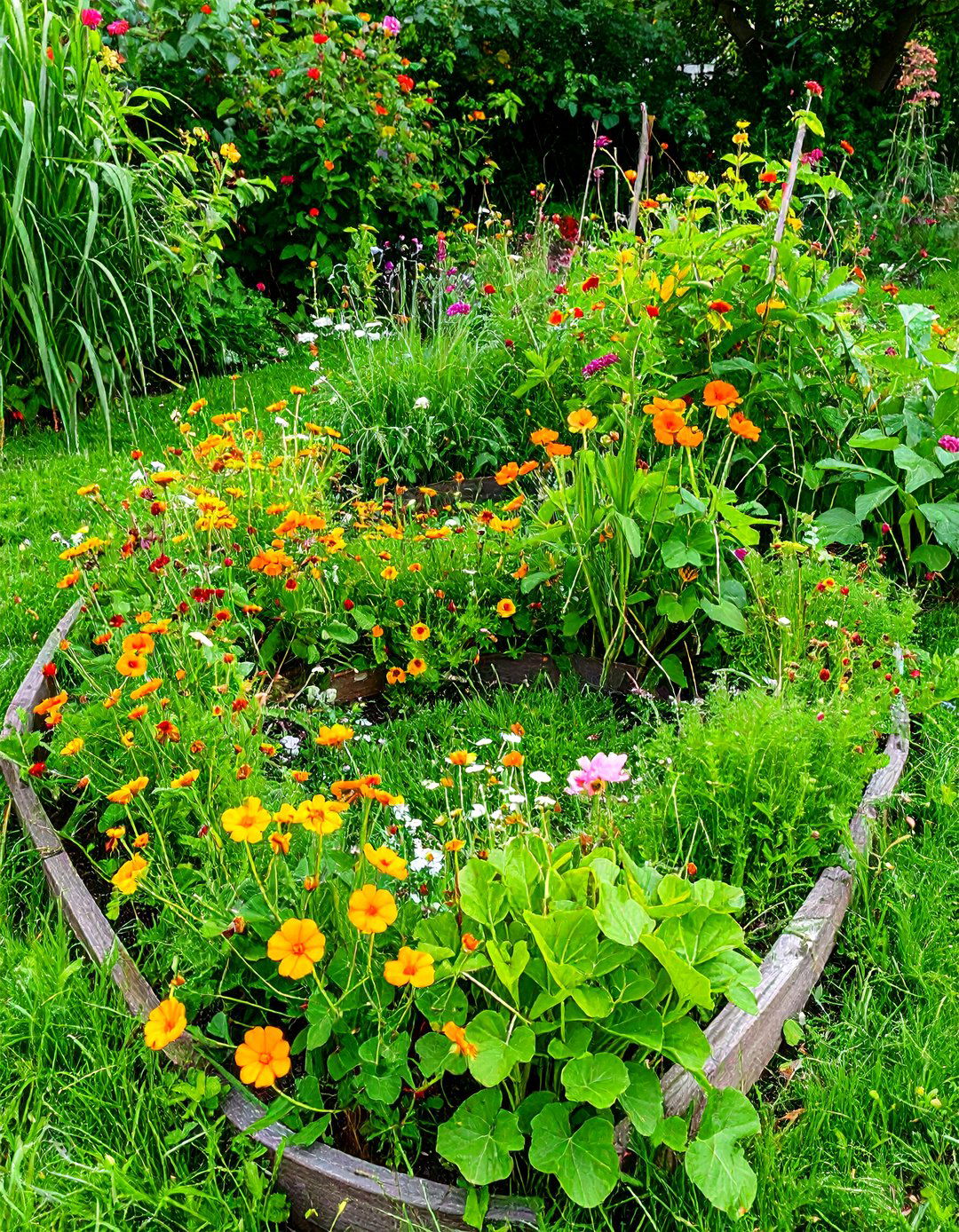
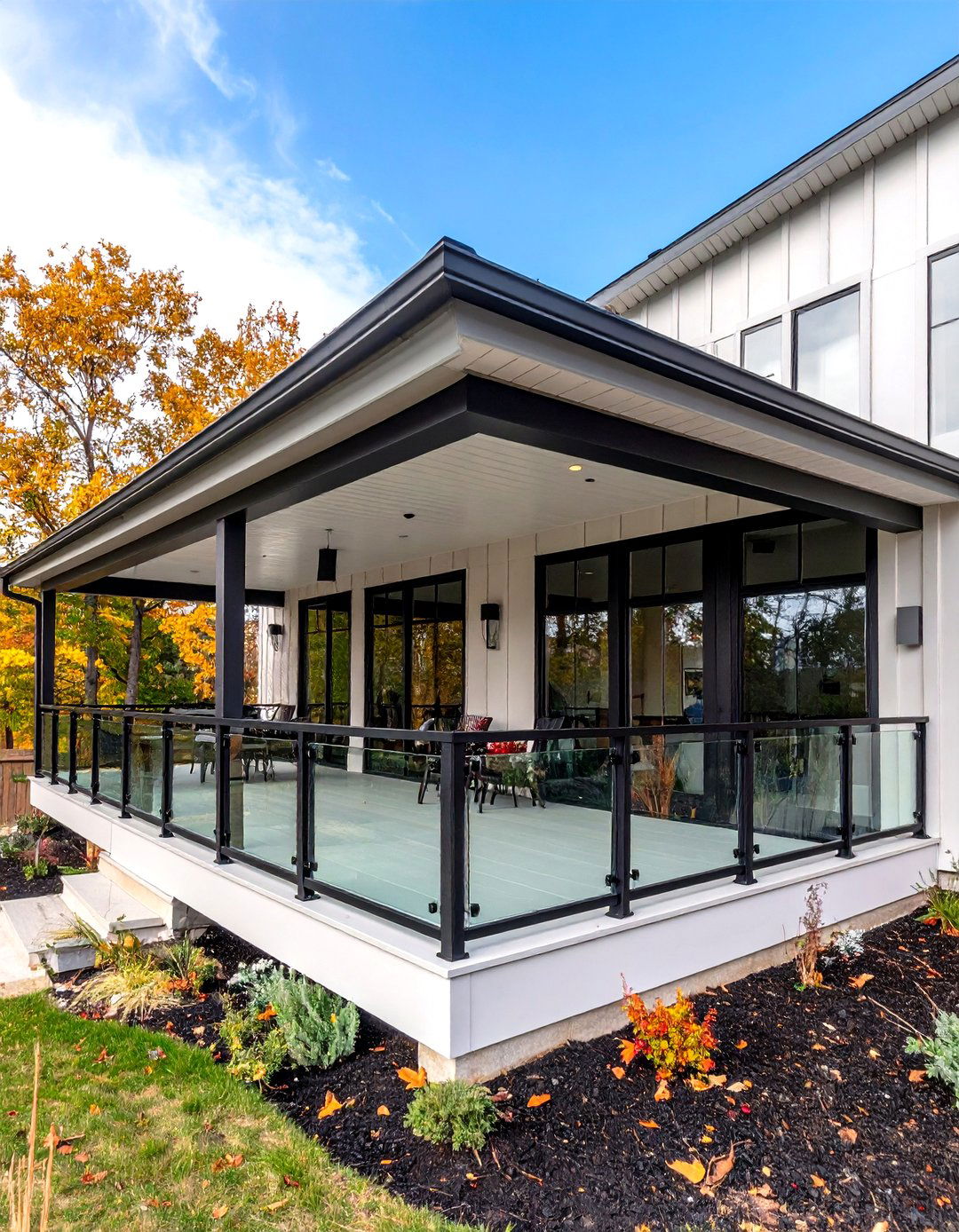
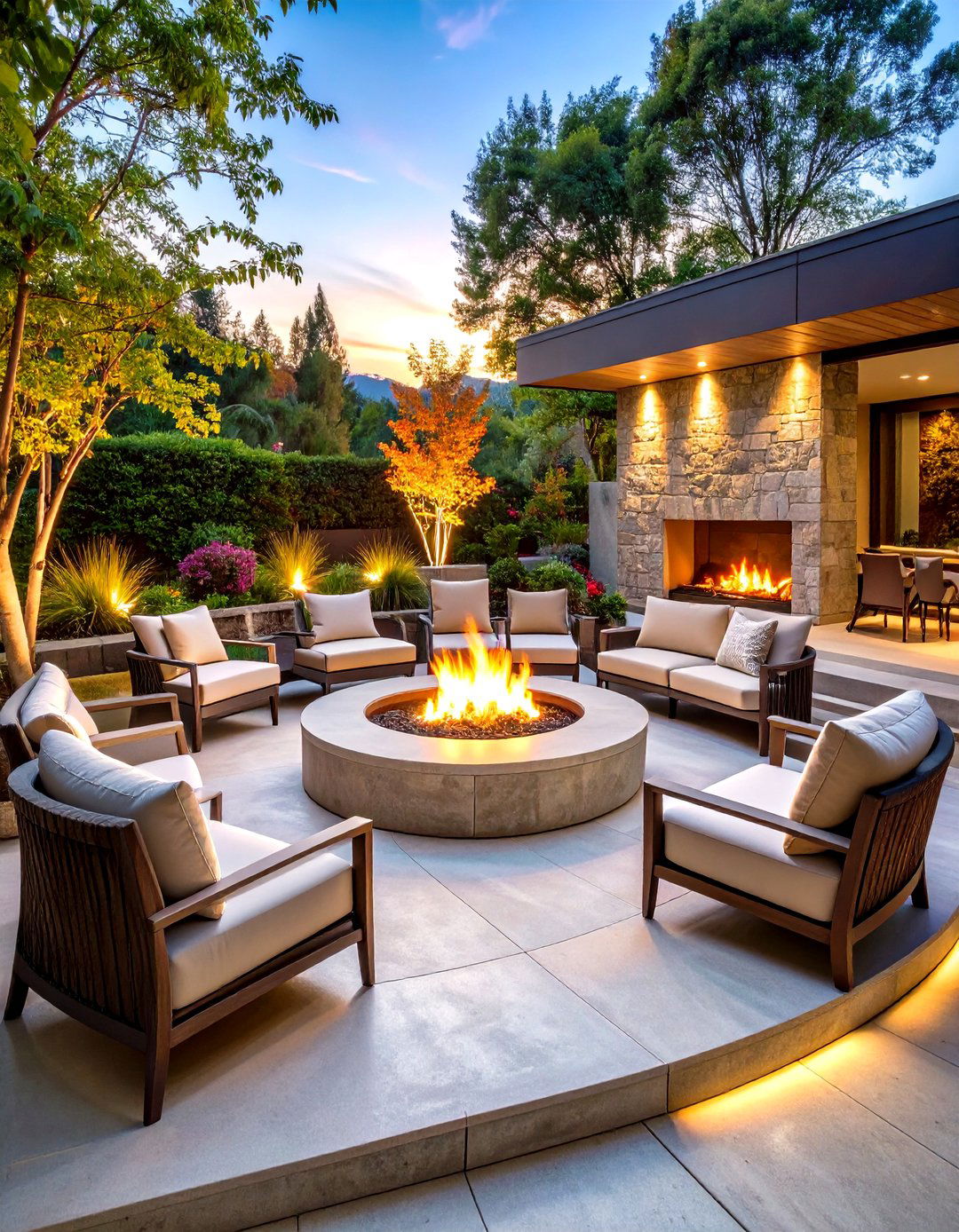
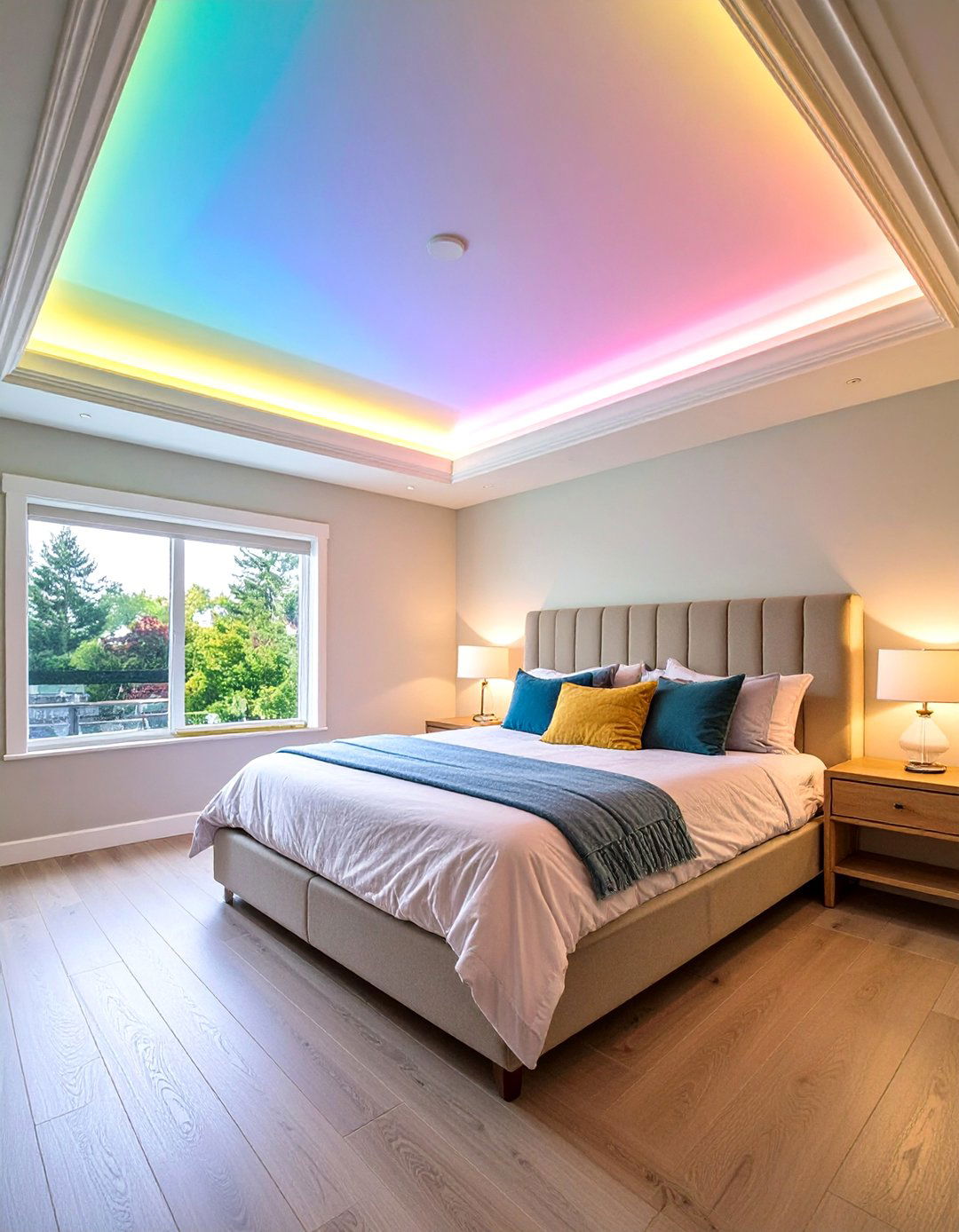
Leave a Reply